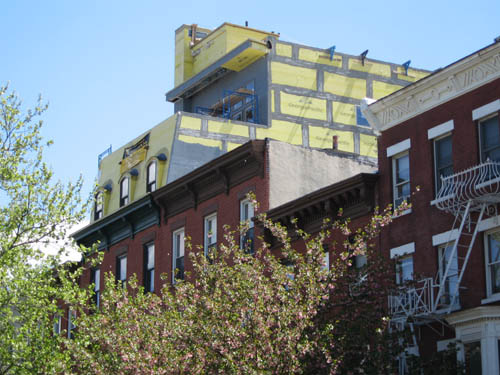The Big Carroll Gardens Issues: Rezoning & Landmarking

For all the discussion in Carroll Gardens about the building that will be built at 360 Smith Street, and its design and height, the bigger issues according to community leaders are rezoning the neighborhood and enlarging its Historic District. The rub, however, is that neither are likely to happen soon. Residents have been told by the Department of City Planning that it will be at least four or five years before the start of a Carroll Gardens rezoning process (which itself could take a year or quite a bit longer). Likewise, the process of expanding the neighborhood's two-block Historic District is likely to involve years of painstaking research.
"We can stomp our feet and snort and growl to try to create political pressure," said resident Glenn Kelly of the most likely way to try to get rezoning accomplished more quickly. Residents fear that parts of the community have a bull's eye drawn over them by developers because the current R6 Zoning makes it an appealing target for relatively high density development. Nearby neighborhoods like Park Slope, Fort Greene, Cobble Hill and Brooklyn Heights all have zoning which limit building height. R6 zoning doesn't limit height.
"We're very concerned right now," Mr. Kelly said. "There are some very large parcels of land available."
The former International Longshormen's Association Building property, for instance, at 340 Court Street could support a 13-story building under current zoning. The building is owned by Long Island College Hospital and was recently put on the market. It could go for as much as $20 million. The building is between Sackett and Union Streets.
Some residents are hoping that a Carroll Gardens rezoning could be piggybacked with a rezoning of Gowanus, although it is unclear what sort of political and land use tradeoffs would be involved. Ironically, developers can build at higher densities in Carroll Gardens because the gardens in front of buildings from which the neighborhood takes its name are considered part of the public right-of-way. So, streets which are really very narrow are considered "wide" for zoning purposes.
Architect and Carroll Gardens resident John Hatheway, who has done a study of ways to rezone the neighborhood, says the neighborhood hopes to have that "anomaly" changed and that there is still hope that it can "bundle into the Gowanus rezoning."
In the meantime, the Landmarks Preservation Commission has not responded to inquiries about beginning the process of expanding the neighborhood's minuscule historic district. A meeting with LPC Chair Robert Tierney is scheduled on July 11.
Labels: Carroll Gardens, Rezoning, Urban Planning

0 Comments:
Post a Comment
<< Home